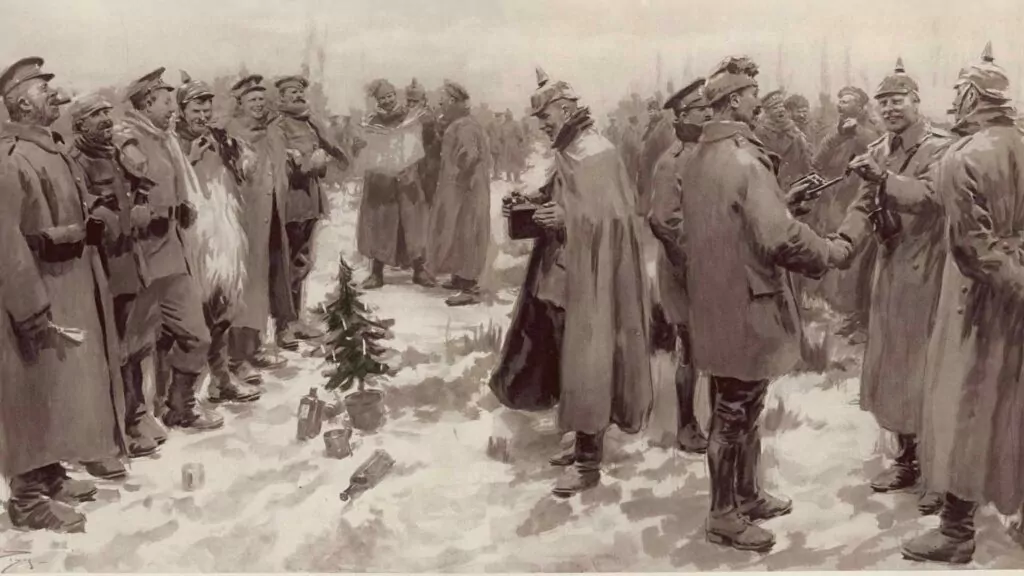Editor’s note: for those who might have thought the radical bias of today’s mainstream press media was only a very recent thing, this 2004 blast from the past will show how it goes back decades further.
****
Every few years citizens in countries such as Canada, the USA and Australia receive the opportunity to make a very significant political decision – the selection of their governments. In some cases citizens also receive the opportunity to help decide public policy outside of the electoral process. Whatever the case may be, good information is a prerequisite to good decision-making.
But where does this information come from?
The most common source of political information is the mainstream media. In and of itself this is nothing to be concerned about… but what if they all reflected the same political perspective? What if they have taken sides in the great political conflicts of the day? What if the vast majority of people who work in the media are personally committed to certain political causes at the expense of others?
This, unfortunately, long appeared to be the case, at least in North America. As a result, citizens don’t always receive pertinent information on political affairs and are shielded from legitimate and credible perspectives.
Pro-life journalists, unbiased reporters, and other mythical creatures
In the USA political conservatives have been concerned about a leftwing bias in the media for years. Their concerns were verified already back in 1986 when a major study of the media was released, called, The Media Elite, by S. Robert Lichter, Stanley Rothman, and Linda S. Lichter. This study entailed interviews with over 200 journalists at the most influential media outlets in the United States.
To put it bluntly, there is no question that a large majority of journalists are leftwing. And it is inescapable that their perspective affects the way they report the news. A small sample of the findings of this study demonstrated the extent of the problem. Journalists were asked to describe their own political leanings. The researchers reported as follows:
“54 percent place themselves to the left of center, compared with only 17 percent who choose the right side of the spectrum. (The remainder picks ‘middle of the road.’) When they rate their fellow workers, an even greater difference emerges. 56 percent say the people they work with are mostly on the Left, and only 8 percent place their co-workers on the Right – a margin of seven to one.”
The disparity is especially great with regards to social issues. For example, 90 per cent of these journalists were “pro-choice” on the abortion issue. In short, “they are united in rejecting social conservatism and traditional norms.” This information led the researchers to conclude that, “members of the media elite emerge as strong supporters of sexual freedom and as natural opponents of groups like the Moral Majority.” The now-defunct Moral Majority was the most prominent conservative Christian political organization in the United States during the 1980s. The point is that the vast majority of American journalists were leftwing in the 80’s and they continue to be so today. And this bias is especially obvious concerning the issues that matter most to Christians.
Do leftwing journalists produce leftwing news?
Demonstrating that most journalists are leftwing doesn’t automatically mean that news is presented with a leftwing slant. It’s at least theoretically possible that these journalists would work to produce a balanced presentation of the issues.
But, in fact, other studies do provide considerable evidence that the leftwing perspective comes through loud and clear. University of Calgary political scientist Barry Cooper has been studying the Canadian Broadcasting Corporation (CBC) for years, and the most significant result of his efforts is the book Sins of Omission: Shaping the News at CBC TV (1994). From his evidence, it is clear that the CBC has long had a leftwing bias.
To conduct his study Cooper poured over a large number of transcripts from TV news broadcasts and compared what was said with the political reality of the situation being portrayed. The main drawback to his book is the fact that he decided to focus on the coverage of foreign affairs, and in particular, issues related to the Cold War and the Soviet Union. Thus the material is of less interest to Christians concerned with domestic social issues. Nevertheless, Cooper is able to clearly demonstrate that the CBC had its own political agenda in its coverage of foreign affairs.
Making evil look attractive
One part of the study looks at how the internal affairs of the Soviet Union were portrayed, including the Soviet occupation and withdrawal from Afghanistan, which was a major issue at the time. The general tendency in the coverage was to make it appear that the Soviet Union was much like Canada.
“Obvious external or elemental differences, such as the absence of genuine elections, the existence of a secret police, the concentration camps, and restrictive emigration policy, were ignored, played down, or euphemized into innocuous variations of normalcy. In short, the substantive political and, indeed, cultural differences between the political regimes established by communism in the USSR and those set up by liberal democracy in the West were minimized.”
In fact the political life of the Soviet Union was very different from Canada’s due to the brutal nature of the totalitarian ideology that guided its regime. The CBC was apparently happy to turn a blind eye to the suffering of the people in that country.
A major feature of the Cold War, of course, was the relationship between the Soviet Union and the United States. During the period studied by Cooper there were a couple of summit meetings between the leaders of these two countries (Mikhail Gorbachev and Ronald Reagan) that received considerable media coverage. Officials from both countries presented the views of their respective countries, but the CBC did not treat these statements in the same way. As Cooper puts it, “the surface meaning of Soviet accounts was overwhelmingly accepted at face value. Accounts by U.S. officials, in contrast, were severely scrutinized, and alternative visualizations were presented.” The CBC was skeptical of American claims but not of Communist Soviet claims.
There is considerably more detail in Cooper’s study carefully documenting his conclusions, but the long and the short of it is this:
“The visualization of the summit meetings was remarkably consistent: the USSR was seen as a progressive and dynamic actor, the United States as a source of resistance to peace initiatives.”
The CBC “advanced the vision of a progressive USSR and a dangerous United States.” The Communists were the good guys and the Americans were the bad guys. It’s almost hard to believe that journalists from a free country could so blatantly side with one of the most oppressive regimes in history. But as Cooper sees it, “CBC visualizations were ‘objectively’ in the service of Soviet propaganda.”
According to Cooper, the basic philosophy guiding CBC coverage of US-Soviet relations was “moral equivalence.” Basically this view assumes that the USA and Soviet Union (liberal democracy and communist totalitarianism) have similar virtues and vices, and so one side is not to be seen as morally superior to the other (although the analysis above shows that the CBC gave the Soviets the upper hand).
But “moral equivalence” is extremely erroneous. “The doctrine of moral equivalence, which is the articulate conceptual statement that the CBC operationalized in its coverage of the Soviet Union, ignored the most fundamental distinction in political life, the distinction between tyrannical and non-tyrannical forms of government. This omission led to such otherwise inexplicable curiosities as equating or balancing U.S. support for the Afghan mujahedeen with the Soviet invasion of that country. Moreover, some stories did more than bend over backwards or forwards to excuse the actions of a tyranny.” To put it crudely, Canadian taxpayers underwrote Soviet propaganda in the form of CBC TV broadcasts. It’s bad enough to have to endure leftwing media bias, but to have to support it through our taxes only adds insult to injury.
The money trail
In their book And That’s The Way It Isn’t: A Reference Guide to Media Bias (1990), editors L. Brent Bozell and Brent H. Baker make another point that is rather striking. Like other businesses, media corporations in the USA contribute money to many charities, educational groups and other organizations that advocate particular political agendas. The vast majority of this money goes to support leftwing causes. At the time of their study:
“Of nearly four million dollars contributed to political organizations, the foundations for ten of the biggest media empires allocated 90 percent to liberal organizations and only 10 percent to conservative ones.”
Furthermore, the organizations that receive that money also receive more media coverage than those that don’t. “A media company which feels that a group is impressive enough to deserve funding seems to feel it is impressive enough to deserve its publicity.”
The problem of media bias is not without political consequences. People in democratic countries make decisions based on the information they have, and the media slant can help to bend that decision-making in a particular direction. According to Bozell and Baker:
“By exercising control over the nation’s agenda – picking and choosing which issues are fit for public debate, which news is ‘fit to print’ – the news media can greatly influence the political direction of the country.”
Everybody has a perspective, and everybody’s perspective affects how they interpret politics, so journalists are not unique in this regard. But when the vast majority of people in the media share the same leftwing perspective, the conservative side is marginalized and does not receive a fair hearing in public debate. Thankfully there are Christian publications such as Reformed Perspective which can help to offset this imbalance. But the truth is these alternative publications do not (yet?) reach a large audience, so their effectiveness is limited.
Christians need to maintain a critical and skeptical stance towards the mainstream media. To a large degree, we rely on those who oppose our perspective for information about current events and political affairs. But we should not allow them to lead us to accept views contrary to our confession. Being conscious that much of the mainstream media has a leftist political agenda can help us to avoid accepting non-Christian or even anti-Christian viewpoints.
This first appeared in the May 2004 issue of the magazine.











